The world of beer packaging design is a dynamic and ever-evolving art form that plays a pivotal role in shaping consumer perceptions and brand identities. As breweries and beverage companies strive to differentiate themselves in a crowded marketplace, the importance of effective beer packaging design cannot be overstated. This guide delves into the key elements, principles, and strategies that contribute to creating memorable and impactful beer labels and packaging solutions. From understanding the fundamental components of beer packaging to exploring innovative design approaches, we will examine how creativity and functionality can work hand-in-hand to produce packaging that not only catches the eye but also resonates with consumers.
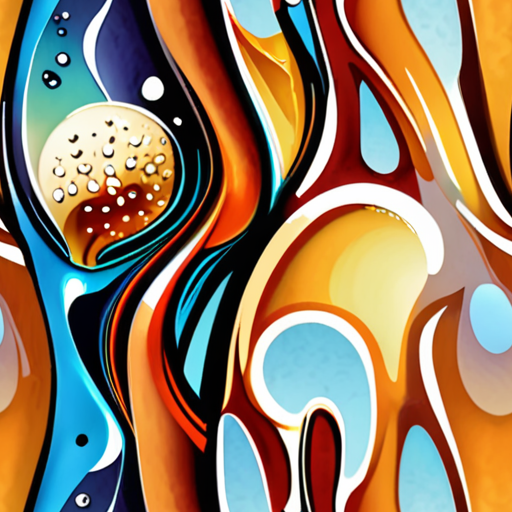
What Are the Key Elements Involved in Creating an Effective Beer Packaging Design?
Creating an effective beer packaging design involves several critical elements that work together to capture attention, communicate brand identity, and appeal to consumers. Here’s a breakdown of the key components:
1. Color Harmony
The color scheme plays a pivotal role in beer packaging design. Brewers often use metallic tones like gold, silver, or bronze to evoke luxury and sophistication, while vibrant colors like green or red can signify freshness and energy. The choice of color should align with the brand’s identity and convey the type of experience the beer promises.
2. Distinctive Typography
Font selection is crucial for beer labeling. Clean, modern fonts convey authenticity and approachability, while elegant scripts can highlight premium quality. The typography should be legible from a distance and complement the overall aesthetic without overpowering it.
3. Visual Appeal
Packaging designs often feature eye-catching imagery, such as high-quality images of hops, malt, or the brewing process. Artwork that tells a story or showcases the craftsmanship can differentiate a brand in a crowded market. Illustrations and minimalist designs are equally effective, depending on the brand’s personality.
4. Brand Consistency
Consistency in design is key to building brand recognition. From the logo placement to the color palette, every element should reflect the brand’s identity. A cohesive design ensures that the packaging stands out on shelves and communicates the brand’s values to consumers.
5. Functional Design
Practicality cannot be overlooked. The packaging must be durable enough to withstand transportation and display while remaining appealing to consumers. Recyclable materials and sustainable practices are increasingly important as eco-consciousness grows among buyers.
6. Sustainability
More consumers are choosing brands that prioritize environmental responsibility. Incorporating eco-friendly materials, such as biodegradable or recyclable packaging, can enhance brand image and attract environmentally conscious consumers.
7. Storytelling Elements
Packaging designs often include narratives or historical information about the brewer, the ingredients, or the brewing process. Telling a story can create an emotional connection with consumers and make the product more memorable.
8. Balance Between Creativity and Professionalism
While creativity drives innovation, professionalism ensures that the design meets industry standards and appeals to a broad audience. Striking the right balance allows the packaging to stand out without seeming unrefined or overly complex.By thoughtfully incorporating these elements, brewers can create beer packaging designs that not only capture attention but also reinforce their brand identity and resonate with consumers on a deeper level.
Best Practices for Designing Effective Beer Packaging
Beer packaging plays a crucial role in capturing consumer attention, conveying brand identity, and communicating key product attributes. Here are proven strategies to create impactful and memorable beer labels:
- Embrace Color Psychology : Use vibrant, contrasting colors to grab attention. Warm tones like amber and deep reds often resonate well with craft beer drinkers, evoking warmth and sophistication.
- Legible Typography : Choose fonts that are easy to read from a distance. Sans-serif fonts like Helvetica or Montserrat are modern and highly readable, while serif fonts can convey traditional craftsmanship.
- Bold Branding Elements : A prominent logo and brand name ensure quick recognition. Consistency in branding across all packaging reinforces brand loyalty and helps differentiate products on shelves.
- Tell a Story Through Artwork : High-quality images of hops, malt, or fermentation processes can visually communicate the brewing process. Artwork should align with the brand’s personality and cultural context.
- Highlight Key Information : Include alcohol percentage (ABV), ingredient listings, and flavor profiles prominently. This transparency builds trust and appeals to informed consumers.
- Sustainability Matters : Use eco-friendly materials like biodegradable plastics or recycled paper. Many consumers prefer brands that prioritize environmental responsibility.
- Seasonal and Limited-Edition Designs : Special releases can feature festive or thematic artwork, creating urgency and excitement among consumers.
- Consistent Branding Across All Products : Maintain uniformity in design elements to reinforce brand identity. This consistency helps establish trust and recognition in the market.
- Target Your Audience : Tailor designs to appeal to your primary demographic. For example, minimalist designs might attract younger, trend-focused consumers, while classic designs could resonate with more traditional beer enthusiasts.
Competitors like MillerCoors and Anheuser-Busch InBev often leverage these strategies, showcasing the importance of strong visual identity and storytelling in their packaging. By learning from both established players and emerging craft breweries, you can create beer packaging that stands out while remaining true to your brand values.
For more insights into crafting compelling beer labels, explore our brewery reviews and stay updated on current beer trends .
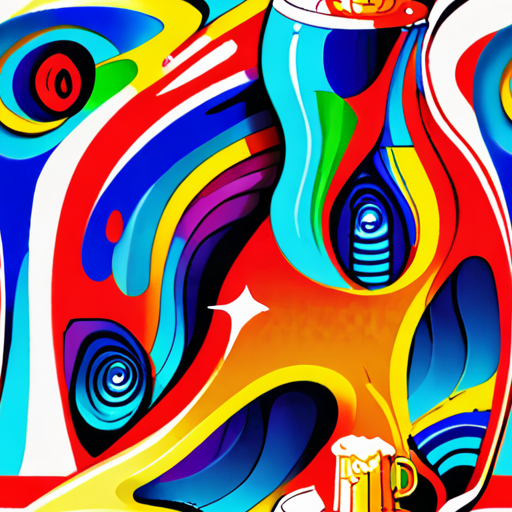
What Are the Key Elements Involved in Creating an Effective Beer Packaging Design?
Creating an effective beer packaging design involves several critical elements that work together to capture attention, communicate brand identity, and appeal to consumers. Here’s a breakdown of the key components:
1. Color Harmony
The color scheme plays a pivotal role in beer packaging design. Brewers often use metallic tones like gold, silver, or bronze to evoke luxury and sophistication, while vibrant colors like green or red can signify freshness and energy. The choice of color should align with the brand’s identity and convey the type of experience the beer promises.
2. Distinctive Typography
Font selection is crucial for beer labeling. Clean, modern fonts convey authenticity and approachability, while elegant scripts can highlight premium quality. The typography should be legible from a distance and complement the overall aesthetic without overpowering it.
3. Visual Appeal
Packaging designs often feature eye-catching imagery, such as high-quality images of hops, malt, or the brewing process. Artwork that tells a story or showcases the craftsmanship can differentiate a brand in a crowded market. Illustrations and minimalist designs are equally effective, depending on the brand’s personality.
4. Brand Consistency
Consistency in design is key to building brand recognition. From the logo placement to the color palette, every element should reflect the brand’s identity. A cohesive design ensures that the packaging stands out on shelves and communicates the brand’s values to consumers.
5. Functional Design
Practicality cannot be overlooked. The packaging must be durable enough to withstand transportation and display while remaining appealing to consumers. Recyclable materials and sustainable practices are increasingly important as eco-consciousness grows among buyers.
6. Sustainability
More consumers are choosing brands that prioritize environmental responsibility. Incorporating eco-friendly materials, such as biodegradable or recyclable packaging, can enhance brand image and attract environmentally conscious consumers.
7. Storytelling Elements
Packaging designs often include narratives or historical information about the brewer, the ingredients, or the brewing process. Telling a story can create an emotional connection with consumers and make the product more memorable.
8. Balance Between Creativity and Professionalism
While creativity drives innovation, professionalism ensures that the design meets industry standards and appeals to a broad audience. Striking the right balance allows the packaging to stand out without seeming unrefined or overly complex.By thoughtfully incorporating these elements, brewers can create beer packaging designs that not only capture attention but also reinforce their brand identity and resonate with consumers on a deeper level.
What Are the Essential Elements Needed for a Successful Beer Packaging Design?
To craft a successful beer packaging design, several key elements must come together to create a compelling and effective package. Here’s a breakdown of the essential components:
1. Brand Identity and Consistency
The packaging must clearly communicate the brand’s personality and values. This includes the use of consistent colors, typography, and logos that align with the brand’s identity. For example, a craft brewery specializing in hop-forward IPAs might opt for bold, vibrant colors and modern, clean typography to reflect their innovative spirit.
2. Visual Appeal and Eye-Catching Design
Beer packaging needs to stand out on the shelf. This can be achieved through creative imagery, such as high-quality photos of the beer being poured, close-ups of hops, or artistic illustrations that evoke the taste and feel of the beverage. The design should also consider the use of gradients, textures, and other visual effects to grab attention.
3. Functional Ergonomics
Beyond aesthetics, the packaging must be functional. This includes factors like:- **Material Quality**: Ensuring the bottle or can is durable and suitable for storage and transportation.- **Ease of Opening/Closing**: A cap that’s easy to twist off without needing tools is essential for consumer convenience.- **Reclosure Ability**: For bottles, a reliable seal is crucial to prevent oxidation and contamination.
4. Sustainability and Eco-Friendly Practices
Consumers are increasingly aware of environmental impact. Incorporating sustainable materials, such as recyclable glass bottles or biodegradable labels, can enhance brand appeal and resonate with environmentally conscious buyers.
5. Storytelling and Brand Narrative
A great beer packaging design tells a story. This could be through the history of the brewery, the inspiration behind the beer, or the craftsmanship involved. Tying the design to a compelling brand narrative helps create an emotional connection with consumers.
6. Compliance and Legal Requirements
Packaging must adhere to local regulations regarding labeling, alcohol content, and safety standards. This includes proper labeling of ingredients, allergen information, and age restrictions.
7. Consumer Feedback and Testing
Before finalizing, it’s important to test the packaging design with real consumers. Gather feedback on aesthetics, usability, and overall impression to ensure the design meets real-world needs.For more insights into crafting the perfect beer packaging design, explore The Goods On Tap, where we delve deeper into the art and science of beer packaging.Additionally, check out our guide on current beer trendsto stay ahead of the competition and ensure your design aligns with consumer preferences.
Key Factors in Beer Packaging Design
The success of beer packaging design lies in its ability to be both functional and visually appealing. Here are the primary factors that contribute to this balance:
1. Material Selection
– **Durability**: Beer packaging must withstand transportation and handling. Materials like corrugated cardboard, glass bottles, and aluminum cans are preferred for their strength and recyclability.- **Eco-friendliness**: Consumers increasingly prefer sustainable packaging options. Biodegradable materials and lightweight options are becoming popular in the craft beer market.
2. Aesthetic Design Elements
– **Color Scheme**: Vibrant colors and metallic finishes often catch the eye, making packaging more appealing. These colors can also convey brand identity and evoke emotions.- **Imagery**: High-quality images of hops, malt, or the brewing process can make the packaging more relatable to beer enthusiasts.- **Typography**: Clear and readable fonts are essential, but unique, artistic typography can also enhance visual appeal.
3. Functional Considerations
– **Portability**: Packaging must be easy to carry. Cans and bottles are preferred for their portability compared to larger formats like kegs.- **Sealing and Closure**: Effective sealing ensures the beer remains fresh. Metal caps and high-quality seals are critical for functionality.
4. Sustainability
– **Recyclability**: Many consumers prefer recyclable materials. Brands using recyclable packaging can reduce their environmental impact and appeal to eco-conscious buyers.- **Minimalist Designs**: Simplistic packaging reduces waste and can make the product seem more premium.
5. Branding and Consistency
– **Brand Identity**: Packaging should reflect the brand’s personality. Consistent use of colors, logos, and messaging helps reinforce brand recognition.- **Seasonal Variations**: Limited-edition packaging allows brands to capitalize on seasonal trends, creating excitement and driving sales.
6. Consumer Engagement
– **Interactive Elements**: QR codes and augmented reality features can enhance the consumer experience, making packaging more engaging.- **Tactile Feedback**: Textures like matte finishes or etched designs can provide a sensory experience, making the packaging more memorable.
7. Regulatory Compliance
– **Brewery Standards**: Packaging must meet local regulations regarding alcohol content, labeling, and safety standards.- **Legal Requirements**: Proper labeling, including ingredients and allergen information, is crucial for compliance and consumer trust.By balancing these factors, brewers can create packaging that is both functional and visually captivating, effectively standing out in a competitive market.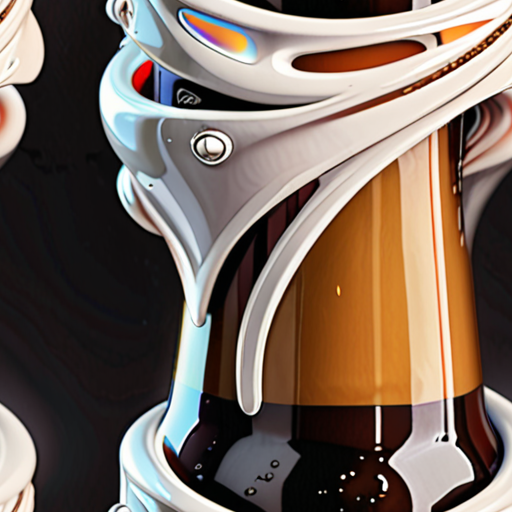
What Makes a Beer Packaging Design Stand Out?
A standout beer packaging design is a combination of several key elements that create a memorable and impactful visual experience. Here’s a breakdown of what makes beer packaging design unique:1. **Color Palette**: Bold and vibrant colors are often the first thing that catches the eye. Many breweries use unconventional hues, like deep purples or neon greens, to differentiate themselves from competitors. These colors are not only eye-catching but also reinforce brand identity.2. **Typography**: Unique fonts and creative text layouts play a significant role in making packaging stand out. Whether it’s a bold, modern sans-serif font or a classic serif style, the typography should complement the overall design and communicate the brand’s personality.3. **Container Shape and Texture**: Innovative shapes, like curved bottles or textured cans, add a unique touch. These designs can make the packaging more visually interesting and help it stand out on the shelf.4. **Sustainability Features**: Eco-friendly materials and practices are increasingly important. Recyclable glass, biodegradable labels, and water-based inks not only appeal to environmentally conscious consumers but also set the brand apart from others.5. **Storytelling Elements**: Labels that incorporate storytelling, such as historical narratives or artistic interpretations, add depth and meaning to the packaging. This creates a connection with the consumer and makes the product more memorable.6. **Brand Consistency**: A cohesive design that aligns with the brand’s identity ensures that the packaging doesn’t feel disjointed. Whether it’s playful, sophisticated, or edgy, the design should reflect the brand’s values and target audience.7. **Competitor Benchmarking**: Keeping an eye on competitors’ packaging designs can provide inspiration. However, it’s crucial to remain true to your brand’s identity rather than mimicking others.8. **Functionality**: While aesthetics are important, the packaging must also be practical. This includes easy-to-read labeling, secure closures, and durable materials that protect the beer during transportation and storage.By combining these elements thoughtfully, a beer packaging design can become truly unique and memorable, capturing the attention of both casual drinkers and connoisseurs alike.


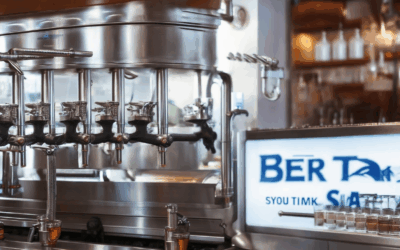
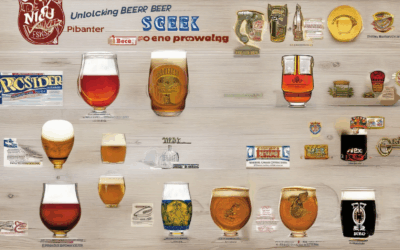
0 Comments